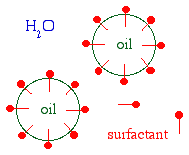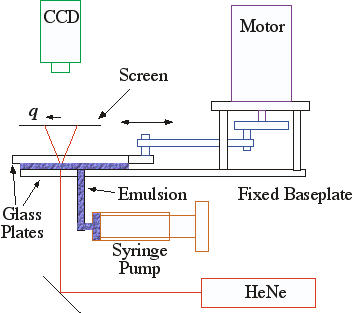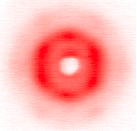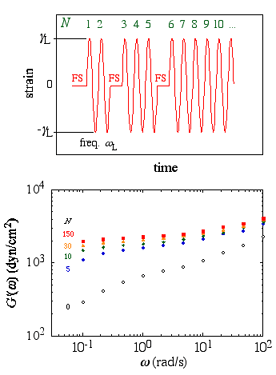We study how strong mechanical
shear is used to create emulsions,
dispersions of droplets of one liquid (e.g. oil) in another immiscible
liquid (e.g. water). These droplets are stabilized against coalescence
(i.e. fusion) by a small quantity of surfactant. Our research focuses on how
the non-Newtonian flow properties of concentrated emulsions having a
high droplet volume fraction affect the ruptured droplet size
distribution. We use an oscillatory controlled-strain plane-Couette
shear cell with time-resolved small angle light scattering to study the
droplet structure during the process of droplet stretching and
rupturing.



